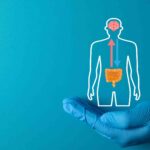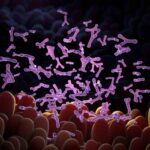What is already known
The genetic makeup of our microbiota changes over time due to multiple factors, including diet and lifestyle. Although the first microorganisms are seeded by the mother during birth and the first months of life, this process cannot account for the huge diversity of microorganisms observed in adults. However, little is known about how members of the microbiota are acquired and spread across human populations.
What this research adds
Researchers analyzed more than 9,000 stool and saliva samples from people in 20 countries to identify how members of the microbiota are transmitted across generations and between people who live in close contact. They confirmed that the first transmission of gut microbes occurs at birth, and bacteria inherited from the mother are found in the gut microbiota of individuals up to 80 years. Another major route of microbial transmission are social relationships, such as those between people that share the same home. The oral microbiota is transmitted more frequently through social relationships than from a mother to her baby.
Conclusions
The findings suggest that a key source of microbes are the people with whom a person lives in close contact. Understanding how microbial species associated with cardiovascular diseases, diabetes and other conditions are spread could inform studies about non-infectious, microbiota-associated diseases.
Each person’s microbiota is so unique that it can identify individuals much like a fingerprint. However, people who spend time together share similar gut microbiotas — with some microbes being largely transmitted between friends and relatives, a new study found.
The findings, published in Nature, suggest that a key source of microbes are the people with whom a person lives in close contact. Understanding how microbial species associated with cardiovascular diseases, diabetes and other conditions are spread could inform studies about non-infectious, microbiota-associated diseases, the researchers say.
Scientists have known that a person acquires their first microorganisms by the mother during birth and the first months of life. However, this process cannot account for the huge diversity of microorganisms observed in adults, and little is known about how members of the microbiota are acquired and spread across human populations.
Researchers led by Nicola Segata at the University of Trento analyzed more than 9,000 stool and saliva samples from people in 20 countries across five continents. The team’s goal was to identify how members of the microbiota are transmitted across generations and between people who live in close contact.
Maternal transmission
The researchers found that nearly 35% of mothers living with their kids shared similar bacterial strains with their offspring, followed by 12% of children up to 4 years of age living in the same household, 8% of adult twins living in different households, and 8% of adults living in the same village.
The researchers confirmed that the first gut microbes are seeded by the mother during birth. More than 15% of the strains detected in children likely originated from the mother. “During the first year of life, infants shared with their mothers half of the strains of the species found in both the infant and the mother microbiomes,” the authors say.
Strain sharing decreased to 27% at 1-3 years of age, and it stabilized after 3 years of age. Bacteria inherited from the mother were present in the gut microbiota of individuals up to 80 years, the researchers found.
“This may be the result of the combined effect of long-lasting maternal microorganism imprinting at birth and strain transmission driven by shared social environments later in life,” they say.
Person-to-person transmission
In most households, cohabiting individuals shared more bacterial strain among each other than with non-cohabiting individuals of the same population. Bifidobacterium and Bacteroides were the bacterial species most transmitted within households and from mothers to offspring. Instead, Bifidobacterium angulatum was preferentially transmitted across households.
The oral microbiota is transmitted more frequently through social relationships than from a mother to her baby, the researchers found. “Our integrative multi-cohort study of microbiome transmission across diverse populations shows extensive previously overlooked person-to-person transmission,” they say.
More work is needed to further understand how, and in which direction, members of the microbiota are transmitted from person to person, the authors add. “Accounting for transmissibility and social network structure will improve the design of future microbiome investigations and modulation approaches.”











